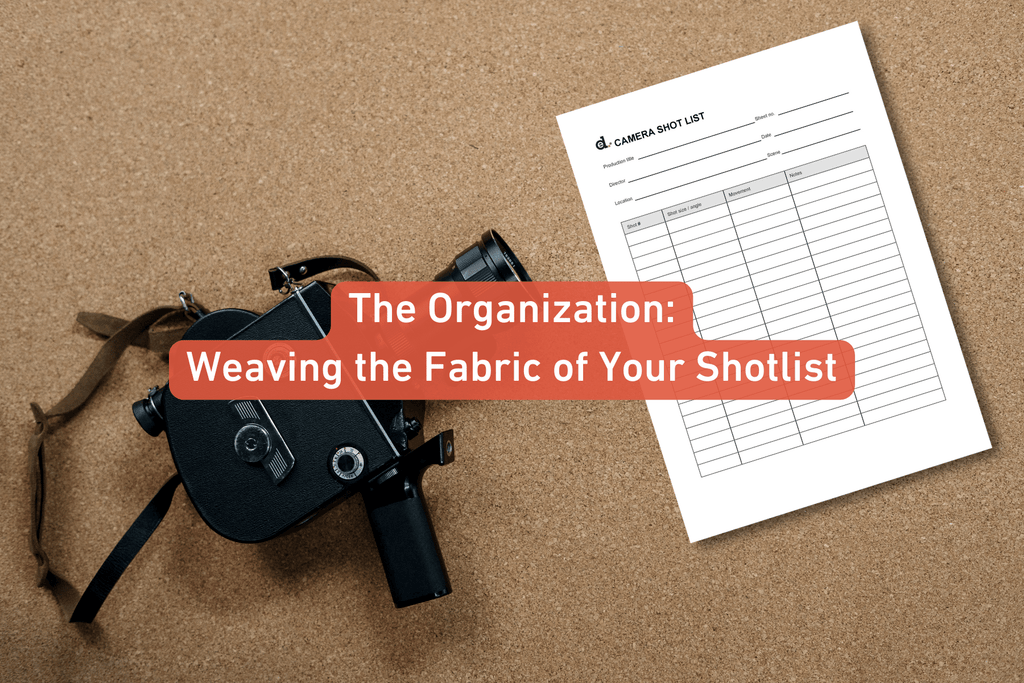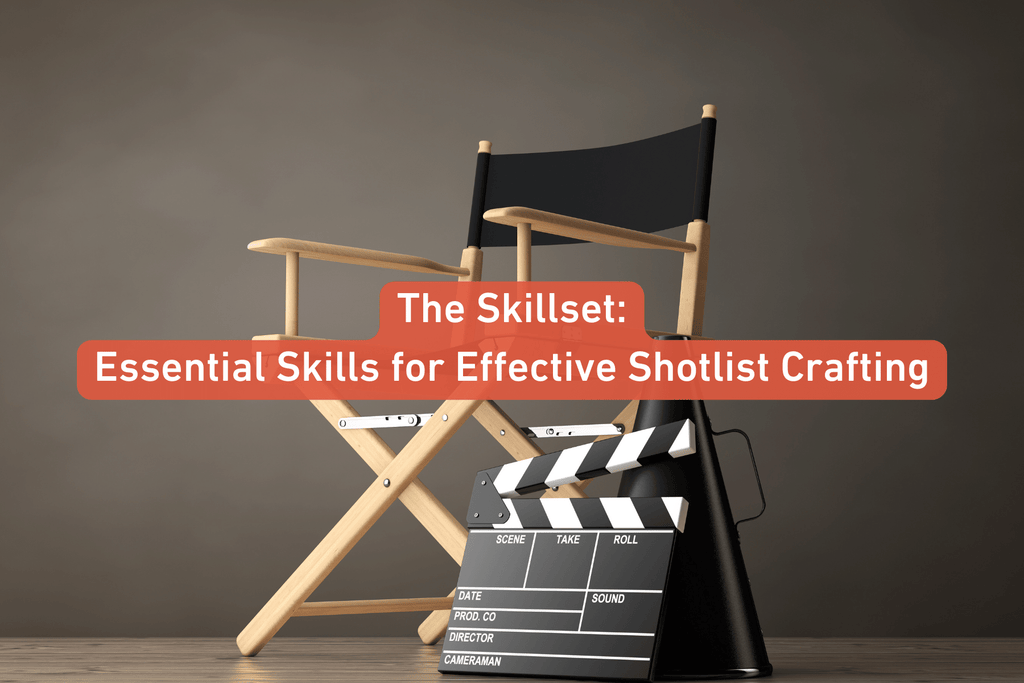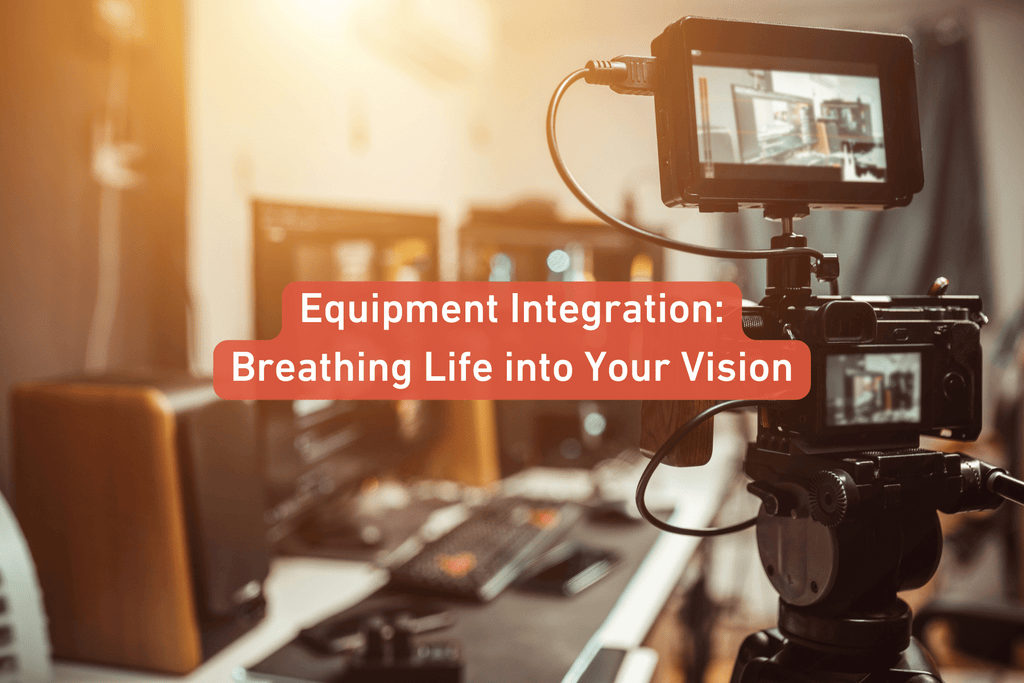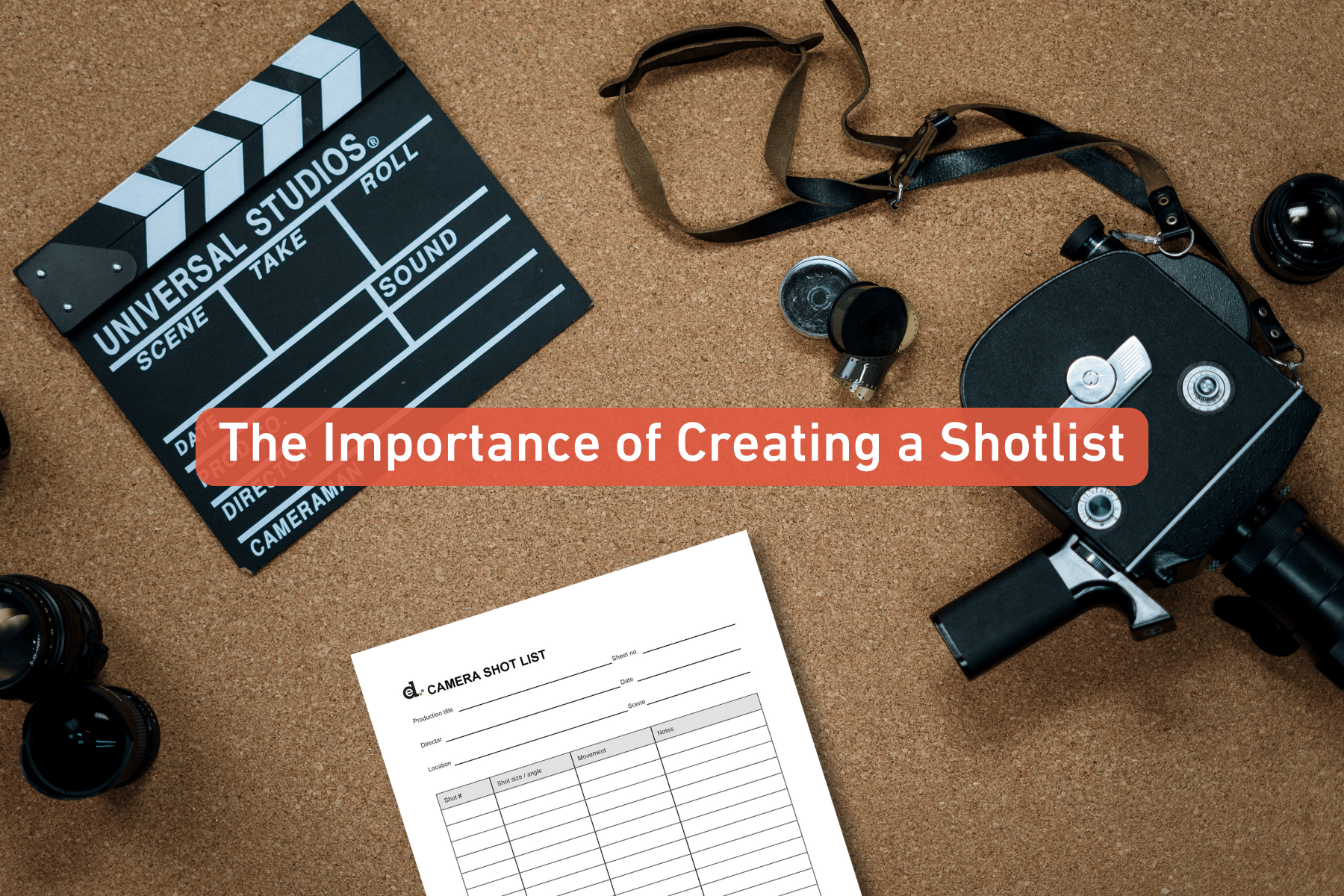For those immersed in filmmaking, whether seasoned cinematographers with years of experience or budding videographers just starting out, creating a shotlist is a bit like sketching the blueprint for an awe-inspiring architectural marvel. Think of it as a compass guiding you through the intricate labyrinth of storytelling, helping you transform the written word of a script into a visual spectacle.
The shotlist, a meticulously designed roadmap, elucidates the shots, camera angles, and composition vital to effectively convey the narrative. In this comprehensive guide, we'll plunge deep into constructing a shotlist, shedding light on the nuances of organization, the essential skillset required, the seamless integration of equipment, and the profound significance of this process within cinematic storytelling.

The Foundation: Deciphering the Script
Before you even compose a shotlist, you must dive headfirst into the script. This initial step is the bedrock; every facet of your shotlist should mirror the narrative's heartbeat and emotional resonance.
- Read and Analyze: Begin your odyssey by immersing yourself in the script's world. Grasp the plot, breathe in the essence of the characters, and delve into the depths of their underlying emotions. Seek out pivotal moments, the crux of the narrative, turning points, and character arcs. Is the tale steeped in lightheartedness or tinged with the dramatic? This insight sets the stage.
- Break Down Scenes: Dissect the script into scenes or sequences. Understand where each scene unfolds, when it occurs in the overarching story, and how it flows about the preceding and subsequent scenes. Scrutinize the pacing and rhythm, paying heed to actions and dialogues propelling the narrative forward.
- Character Motivation: Pay rapt attention to the driving forces behind the characters. Uncover their motivations and emotional states within each scene. This profound insight becomes your North Star, steering your shot choices and dictating camera movements that faithfully mirror their inner journeys.

The Organization: Weaving the Fabric of Your Shotlist
Crafting a shotlist transcends merely listing shots; it's a meticulously structured blueprint for capturing the very essence of the narrative. Here's the architectural framework for organizing your creative visions:
- Categorize Shots: The initial step involves categorizing shots, a form of visual classification. Common categories encompass wide shots, medium shots, close-ups, and extreme close-ups. Each category serves as a brushstroke on the canvas of your film, allowing you to harness a rich visual language.
- Camera Movements: Now, consider the dynamic canvas on which your story will be painted. Think about how your camera will pirouette within each shot. Pans, tilts, dolly tracks, or soaring crane shots are all distinct brushstrokes on your canvas. Optimize each movement to imbue the scene with emotions and propel the narrative.
- Lighting: Illumination is the paint that dapples your canvas, influencing the mood and atmosphere. Determine the lighting setup for each shot, be it natural light, artificial sources, or a delicate fusion of both. Choose between soft, diffused lighting or hard, striking beams. The color temperature, too, is vital in setting the tone.
- Equipment Needs: The tools at your disposal play a pivotal role in the tapestry you weave. Identify the equipment requirements for each shot, be it the bare essentials like tripods and sliders or the more advanced arsenal of gimbals, drones, or cranes. Each piece is a brush in your hand, defining your strokes.
- Shot Descriptions: For every shot on your list, offer a brief glimpse into your vision. Provide a descriptive passage outlining the camera angle, movement, and additional considerations that may shape the shot's identity. It's akin to an artist detailing the textures and colors within a scene, creating an image in the mind's eye of all involved.

The Skillset: Essential Skills for Effective Shotlist Crafting
Crafting a shotlist isn't a mechanical task; it's an artistic endeavor that demands creativity, technical proficiency, and storytelling prowess. Here's a peek at the essential skills required to excel in this art form:
- Storytelling: You must be a storyteller at the core of your being. Your artistry must hinge on understanding how visuals unfurl the narrative tapestry, convey emotions, and sculpt character development.
- Technical Proficiency: Your toolkit should encompass a strong grasp of camera operation, composition, lighting principles, and an innate understanding of color theory. It's the bridge connecting your creative vision to the practical world.
- Communication: The art of communication is a skill set worth its weight in gold. Effective dialogue with the director, the production team, and your creative ensemble is indispensable. Clear articulation of your vision and a keen ear for the insights and ideas of others is the compass that guides your ship to the desired cinematic shore.
- Adaptability: The winds of fortune can change course on any shoot. Be ready to pivot and adapt to the evolving conditions on set. Be it the unpredictability of weather, technical hiccups, or unforeseen actor scheduling conflicts, your flexibility and nimbleness are the armor against chaos.
- Visualization: Before the shutter clicks, you must be able to visualize the scene. This pre-visualization superpower enables you to strategize your shots, anticipate challenges, and make quick, informed decisions on set.

Equipment Integration: Breathing Life into Your Vision
The choice of equipment is pivotal, as it becomes the chisel and palette of your creative endeavors. The selected tools must harmonize with your vision, sculpting it into cinematic reality.
- Camera Choice: The very foundation lies in choosing the right camera. You must weigh the factors of resolution, sensor size, and low-light performance. A high-quality cinema camera might be your muse for a grandiose project, while a DSLR or mirrorless camera can be the muse for more intimate productions.
- Lenses: Lenses are the eyes of your camera. They greatly influence the visual language. Wide-angle lenses embrace expansive landscapes, while telephoto lenses isolate subjects. Prime lenses offer a fixed focal length, delivering a cinematic aesthetic, while zoom lenses offer versatility at the cost of some image quality.
- Stabilization: Smooth, steady shots are the hallmark of professionalism. Gimbals, steadicams, and tripods act as your artists' hands, erasing any unwanted camera shake and ensuring your shots are a testament to control and artistry.
- Lighting Equipment: Your lighting setup is the brush that paints the canvas with mood and atmosphere. Employ a variety of lighting sources, modifiers, and color gels to craft the desired look for each shot.
- Audio Equipment: Sound, the unsung hero of the cinematic experience, must not be forgotten. High-quality microphones and recorders capture pristine dialogue and the ambient symphony that breathes life into your visuals.

The Importance of a Shotlist: Guiding the Cinematic Vision
A meticulously crafted shotlist plays a multifaceted role in the grand narrative of filmmaking:
- Efficiency: It acts as the grand conductor, orchestrating the production symphony. With it, you ensure that you capture every essential shot and angle within the allocated time, maintaining the momentum of your creative vision.
- Consistency: Your shotlist becomes the guardian of visual continuity. It ensures that the tapestry of your story remains consistent, weaving the same threads throughout your production, maintaining the flow and visual language.
- Collaboration: As the common reference point, your shotlist becomes the scroll on which the director, cinematographer, and production team ink their ideas. It forges a clear path for the director's vision to resonate with the whole crew, promoting a unified, collaborative experience.
- Budget Management: The meticulous planning encoded in your shotlist safeguards the coffers. It empowers you to allocate resources judiciously, avoiding costly re-shoots and budget overruns.
- Emotional Impact: Above all, your shotlist is the key to unlocking the hearts of your audience. It empowers you to craft visuals that resonate on an emotional level. Every shot becomes a brushstroke, imbuing the narrative with feelings and ensuring that every frame contributes to the powerful storytelling.
In conclusion, crafting a shotlist is a fundamental aspect of the cinematographer's or videographer's craft, transcending the mere mechanics of camera operation. The Rosetta Stone deciphers the written word into a mesmerizing visual language. An impeccably organized shotlist, guided by a robust skillset and seamlessly integrated equipment, is the compass guiding efficient and impactful filmmaking. It is the bridge between imagination and reality, the conduit to translate the magic of storytelling through the lens.
So, whether you're steering the ship of a Hollywood blockbuster or embarking on a more intimate independent project, always appreciate the boundless power and enduring significance of a meticulously crafted shotlist. It is, in essence, the soul that breathes life into the art of cinematic storytelling.
Related article: How to Make Cinematic Video - 7 Pro Tips
Related article: Medium Close Up: A Key Shot for Filmmakers and Photographers
Related article: Shallow Depth of Field: A Guide to Better Storytelling
Related article: How to Make Videos in the Style of Wes Anderson
Related article: Best Shutter Speed for Video












